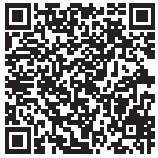Cluster Headaches
OBJECTIVES
To analyze characteristic clinical features of episodic cluster headache.
To briefly review the current classification of the many varieties of cluster headache.
To summarize management guidelines for episodic cluster headache.
VIGNETTE
A 28-year-old man was evaluated because of recurrent unilateral headaches.
 |
Without any warning, our patient experienced a rather stereotypical syndrome characterized by recurrent brief attacks of severe unilateral pain centered around the left periorbital/retroorbital region, lasting 60 to 90 minutes. The pain was constant and more common nocturnal, awakening him from sleep. He had no gastrointestinal complaints. During attacks, he was restless, unable to lie flat, and constantly pacing.
There were ipsilateral autonomic signs related to sympathetic paresis and parasympathetic system overactivity such as conjunctival injection, lacrimation, rhinorrhea, and eyelid ptosis and miosis (as noted on his medical records). He had no manifestations of trigeminal nerve dysfunction. The attacks occurred with a frequency from once daily to once every other day, lasting for a few weeks to 2 months. There was a characteristic periodicity with pain-free intervals of many years. High-flow oxygen therapy was very effective in aborting an attack.
According to the International Headache Society (IHS), our patient fulfilled diagnostic criteria for episodic cluster headache. Cluster headache has been classified into (a) episodic, (b) chronic, (c) chronic paroxysmal hemicrania, and (d) cluster headache-like syndrome. Chronic cluster headaches have been further subdivided into primary chronic (chronic from onset) and secondary chronic (chronic cluster headache evolving from episodic cluster headache). Eighty percent of cluster sufferers have the episodic variety of cluster. Men are affected more than women (3 to 6:1 ratio). The exact prevalence of cluster headache is unknown but has been estimated to be at least 0.4% in men and 0.08% in women.
Stay updated, free articles. Join our Telegram channel

Full access? Get Clinical Tree








